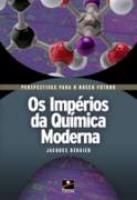Descrição
Table of Contents
1. The Densities of Liquids and Solids.
2. Resolution of Matter into Pure Substances, I. Paper Chromatography.
3. Resolution of Matter into Pure Substances, II. Fractional Crystallization.
4. Determination of a Chemical Formula.
5. Identification of a Compound by Mass Relationships.
6. Properties of Hydrates.
7. Analysis of an Unknown Chloride.
8. Verifying the Absolute Zero of TemperatureDetermination of the Atmospheric Pressure.
9. Molar Mass of a Volatile Liquid.
10. Analysis of an Aluminum-Zinc Alloy.
11. The Atomic Spectrum of Hydrogen.
12. The Alkaline Earths and the HalogensTwo Families in the Periodic Table.
13. The Geometrical Structure of MoleculesAn Experiment Using Molecular Models.
14. Heat Effects and Calorimetry.
15. The Vapor Pressure and Heat of Vaporization of a Liquid.
16. The Structure of CrystalsAn Experiment Using Models.
17. Classification of Chemical Substances.
18. Some Nonmetals and Their CompoundsPreparations and Properties.
19. Molar Mass Determination by Depression of the Freezing Point.
20. Rates of Chemical Reactions, I. The Iodination of Acetone.
21. Rates of Chemical Reactions, II. A Clock Reaction.
22. Properties of Systems in Chemical EquilibriumLe Châteliers Principle.
23. Determination of the Equilibrium Constant for a Chemical Reaction.
24. The Standardization of a Basic Solution and the Determination of the Molar Mass of an Acid.
25. pH MeasurementsBuffers and Their Properties.
26. Determination of the Solubility Product of Ba(IO3)2.
27. Relative Stabilities of Complex Ions and Precipitates Prepared from Solutions of Copper(II).
28. Determination of the Hardness of Water.
29. Synthesis and Analysis of a Coordination Compound.
30. Determination of Iron by Reaction with PermanganateA Redox Titration.
31. Determination of an Equivalent Mass by Electrolysis.
32. Voltaic Cell Measurements.
33. Preparation of Copper(I) Chloride.
34. Development of a Scheme for Qualitative Analysis.
35. Spot Tests for Some Common Anions.
36. Qualitative Analysis of Group I Cations.
37. Qualitative Analysis of Group II Cations.
38. Qualitative Analysis of Group III Cations.
39. Identification of a Pure Ionic Solid.
40. The Ten Test Tube Mystery.
41. Preparation of Aspirin.
42. Rate Studies on the Decomposition of Aspirin.
43. Analysis for Vitamin C.
Appendix I: Vapor Pressure and Density of Liquid Water.
Appendix II: Summary of Solubility Properties of Ions and Solids.
Appendix IIA: Some Properties of the Cations in Groups I, II, and III.
Appendix III: Shared Atomic Weights of the Elements (Scaled Relative to Carbon-12 = 12 g/mol).
Appendix IV: Making MeasurementsLaboratory Techniques.
Appendix V: Mathematical ConsiderationsMaking Graphs.
Appendix VI: Suggested Locker Equipment.
Appendix VII: Introduction to Excel.
Appendix VIII: Statistical Treatment of Laboratory Data




